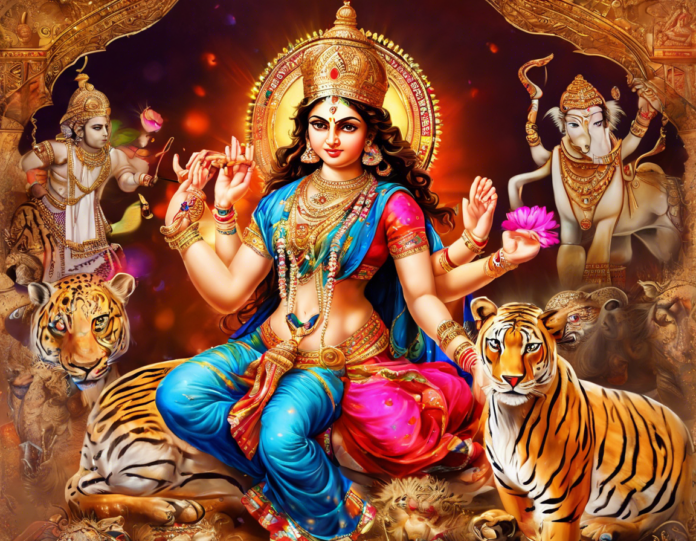Navratri is a Hindu festival dedicated to the worship of the deity Durga, where devotees observe a fast and pray for nine consecutive days. The festival symbolizes the triumph of good over evil and is celebrated with much fervor and enthusiasm across India and in many parts of the world. The last day of Navratri, also known as Vijayadashami or Dussehra, holds particular significance as it marks the culmination of the nine-day festival with grand celebrations and rituals.
Significance of Navratri Last Day:
On the tenth day of Navratri, Hindus celebrate Dussehra, which signifies the victory of Lord Rama over the demon king Ravana according to the epic Ramayana. It is believed that on this day, Lord Rama defeated Ravana and rescued his wife, Sita, symbolizing the victory of righteousness over evil. The day also marks the end of the auspicious period of Navratri and is considered highly propitious for new beginnings, ventures, and endeavors.
Festivities on Navratri Last Day – April 2024:
The Navratri celebrations reach a crescendo on the tenth day, and there are various customs and rituals followed on this day:
1. Ritualistic Celebrations:
- Ramleela: The dramatic re-enactment of the Ramayana, known as Ramleela, is performed in many parts of the country, with the final battle between Rama and Ravana staged amidst much fanfare.
- Effigy Burning: Giant effigies of Ravana, Meghnad, and Kumbhakaran are burnt in open grounds to symbolize the victory of good over evil.
2. Traditional Practices:
- Worship: Devotees visit temples and offer prayers to seek blessings for prosperity and happiness.
- Feasting: Traditional sweets and dishes are prepared and shared with family and friends as a mark of celebration.
3. Cultural Events:
- Public Celebrations: Many cities organize grand processions, cultural events, and fairs on this day, attracting large crowds.
4. Customs and Beliefs:
- Ayudha Puja: In some regions, tools, equipment, and vehicles are worshipped on this day as a token of gratitude for their role in livelihoods.
- Vijayadashami Puja: Special pujas are conducted in households and communities to seek blessings for success and prosperity.
FAQs (Frequently Asked Questions):
1. What is the significance of Navratri?
Navratri signifies the victory of good over evil and is dedicated to the worship of Goddess Durga in her various forms.
2. How is Navratri celebrated?
Navratri is celebrated with fasting, prayers, dance (Garba and Dandiya), and feasting for nine consecutive days.
3. Why is Dussehra celebrated?
Dussehra is celebrated to commemorate Lord Rama’s victory over the demon king Ravana, symbolizing the triumph of righteousness.
4. What is the importance of burning effigies on Dussehra?
Burning effigies on Dussehra symbolizes the destruction of evil forces and the triumph of good.
5. What is the significance of Ramleela during Navratri?
Ramleela is a theatrical performance that depicts the life and teachings of Lord Rama, culminating in the battle with Ravana on the final day of Navratri.
6. How do people observe Ayudha Puja on Dussehra?
Ayudha Puja involves the worship of tools, instruments, and machinery as a mark of reverence for their role in one’s livelihood or profession.
7. What are some traditional dishes prepared during Navratri?
Some traditional dishes prepared during Navratri include Sabudana Khichdi, Kuttu ki Puri, Singhare ke Atte ka Samosa, and Lauki ka Halwa.
8. Why is Vijayadashami considered auspicious for new beginnings?
Vijayadashami is considered auspicious for new beginnings as it marks the victory of good over evil and symbolizes the triumph of righteousness.
9. How long does Navratri last?
Navratri spans nine consecutive days and culminates on the tenth day with Dussehra celebrations.
10. What are some common symbols associated with Navratri celebrations?
Common symbols associated with Navratri celebrations include the color white, traditional attire like Chaniya Choli, dandiya sticks, and images of Goddess Durga.






